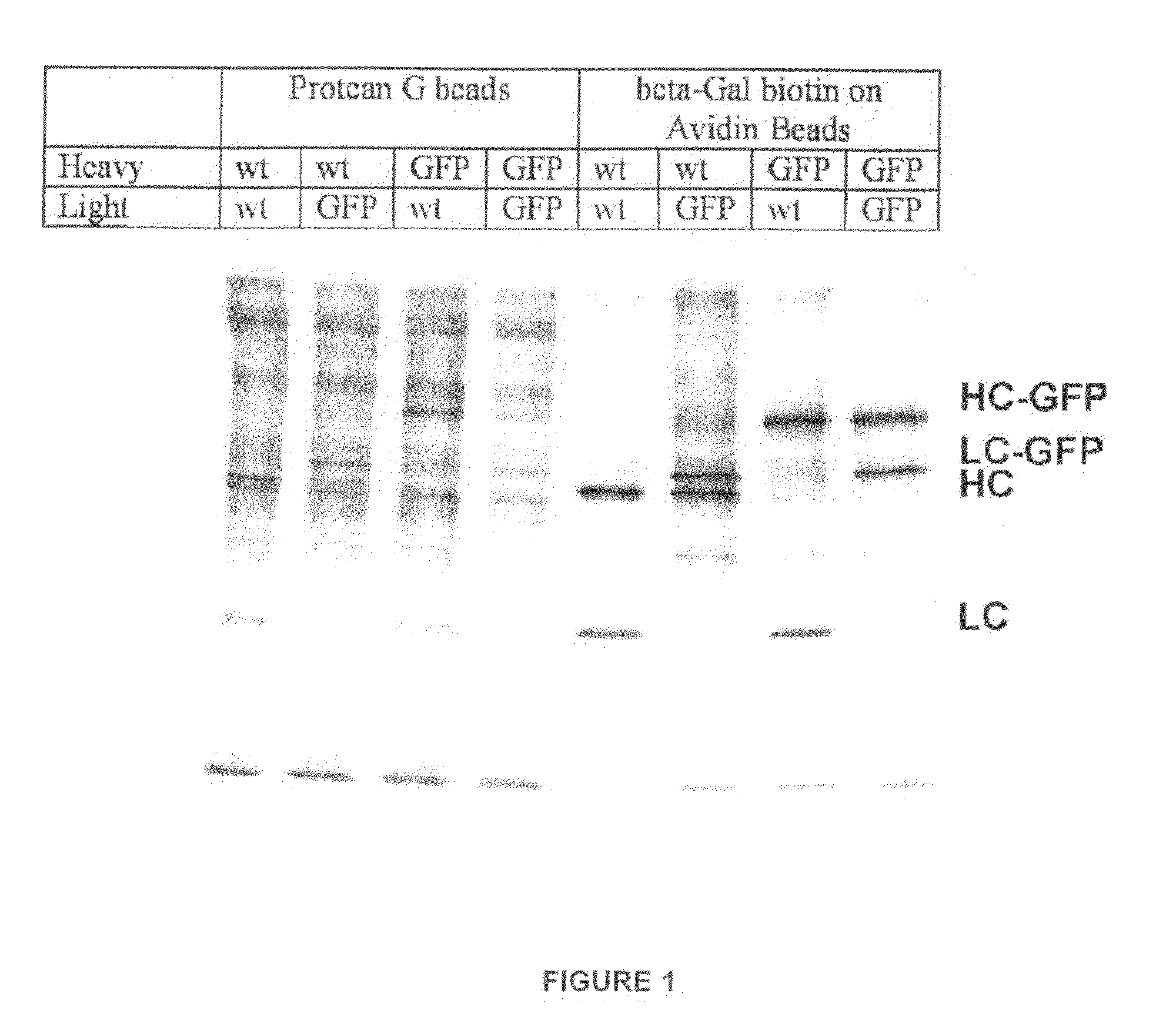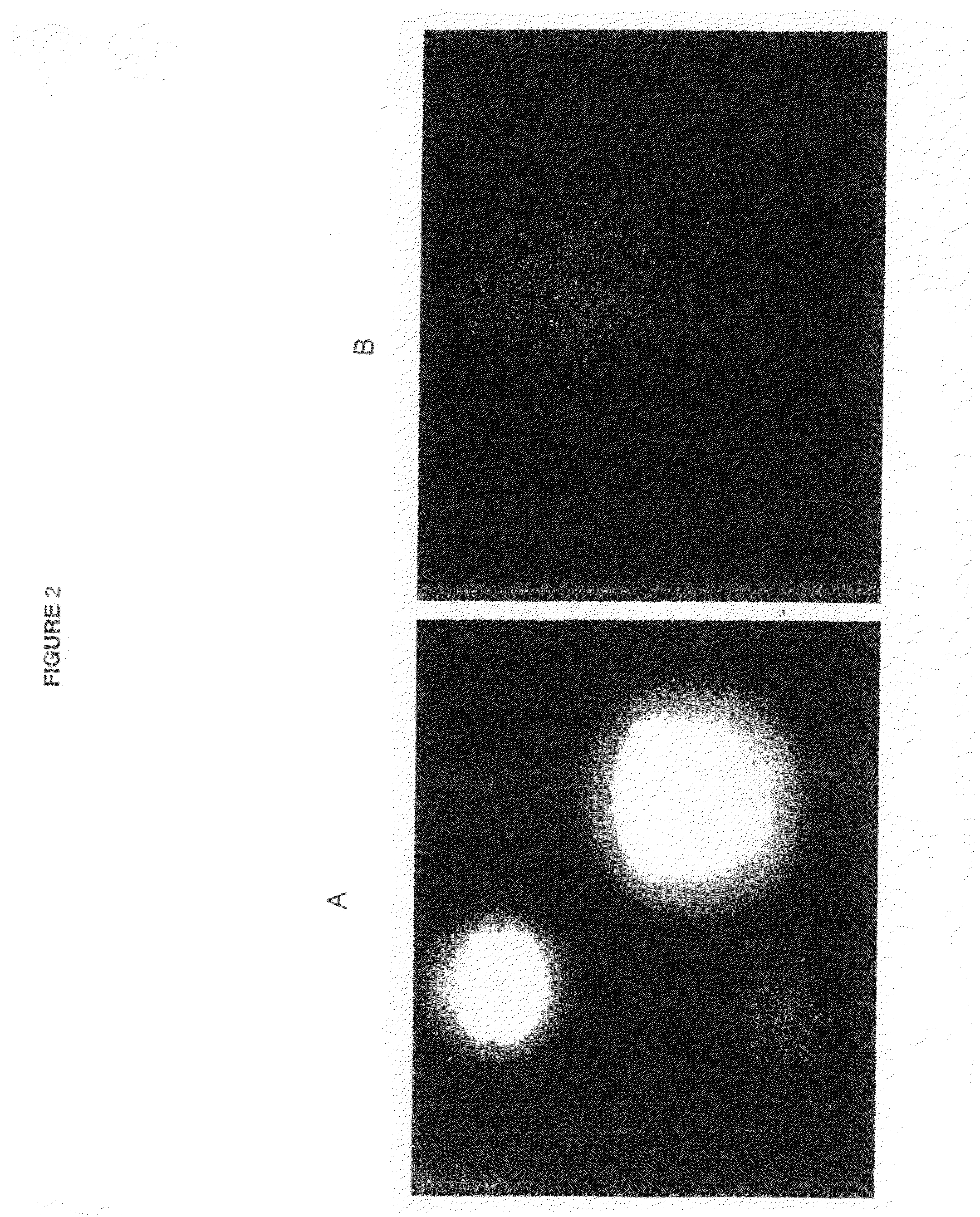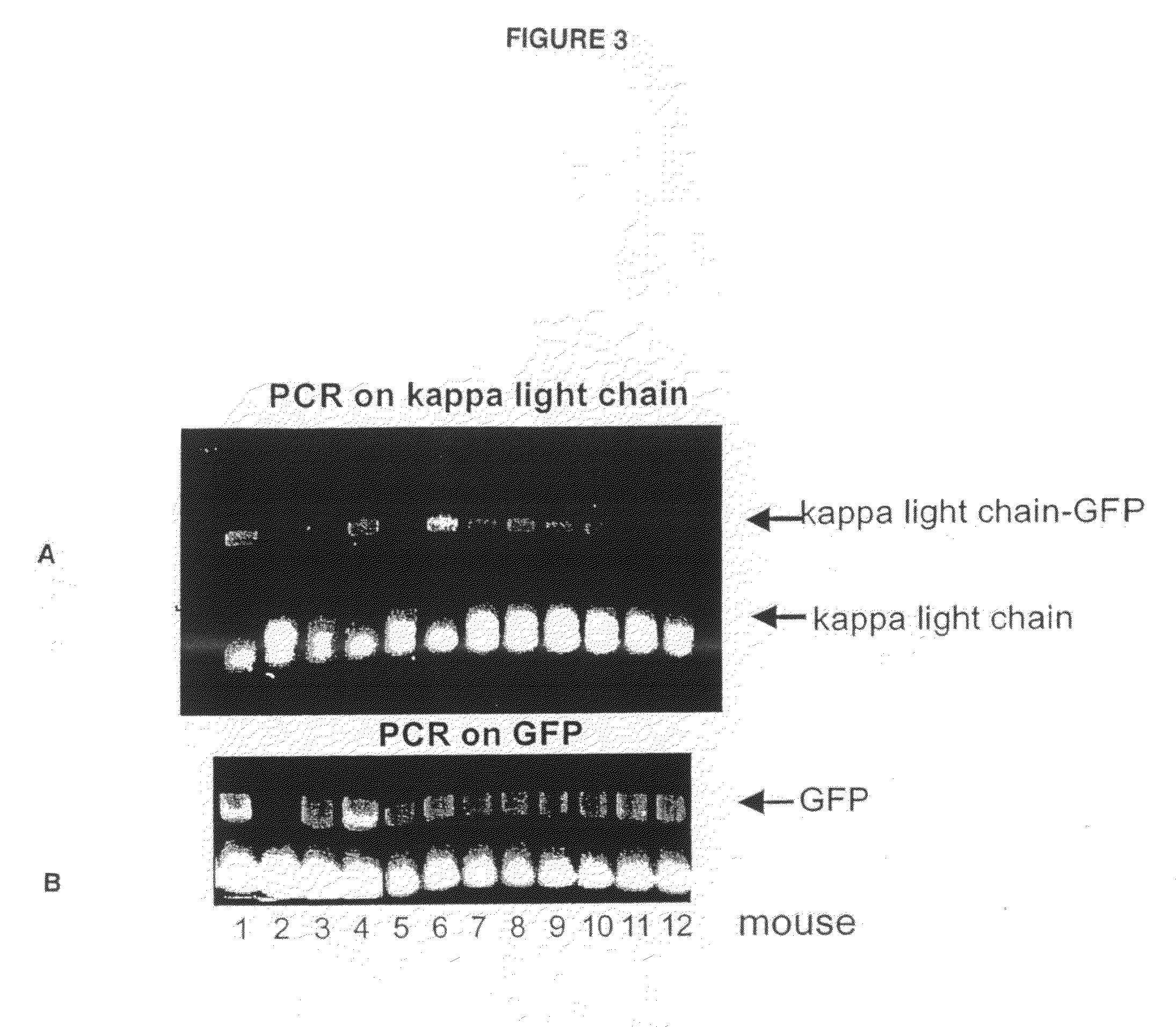Animals, cells and methods for production of detectably-labeled antibodies
a technology of detectable labeling and antibodies, which is applied in the field of animals, cells and methods for producing detectable labeling antibodies, can solve the problems of cumbersome procedures, unsatisfactory background staining, and limitations that do not permit full advantage of these advances
- Summary
- Abstract
- Description
- Claims
- Application Information
AI Technical Summary
Problems solved by technology
Method used
Image
Examples
example 1
Secretion of Detectably-Labeled Antibodies
[0054]A rat IgG2A antibody hybridoma which produces a monoclonal antibody reactive against beta-galactosidase was used to determining whether GFP fusion proteins would be correctly assembled, secreted, and recognize antigen. The cDNA of the secreted form of the heavy and light chains against beta-galactosidase were cloned. The polynucleotide sequence encoding GFP was placed in front of the stop codon of both the heavy chain of IgG2A and light kappa chains. The plasmid combinations of 1) non-GFP tagged, 2) IgG2A heavy chain tagged, 3) light chain tagged, and 4) both heavy chain and light chain tagged, were transfected into 293T kidney cells and tested for ability to bind antigen.
[0055]The 293T cells do not express any endogenous antibodies. They were transfected with two expression vectors of combinations of IgG2A and kappa chains against beta-galactosidase: 1) IgG2A and kappa; 2) IgG2A and kappa-GFP; 3) IgG2A-GFP and kappa; and 4) IgG2A-GFP ...
example 2
Preparation of Genetically-Modified (Knock-in) Animals Comprising Detectably-Labeled Immunoglobulin Genes
[0057]Knock-in or gene replacement involves replacing an endogenous piece of DNA in the chromosome with a constructed piece of DNA. Thus, the constructed DNA must correctly integrate into the same genetic location as the gene to be replaced. This is distinctly different from transgenic technology where a constructed DNA is randomly introduced into a cell.
[0058]I. Construction of a segment of bacterial plasmid DNA that contains the change of interest and extensive homology to the target. Generation of the IgG1-GFP fusion knock-in construct is described below. The VDJ variable regions of the IgG1 constant chain are far upstream (5′) of this area. Immediately upstream of this area are the IgM and IgD constant regions. Downstream to this area are the constant regions for IgG2a, IgG2b, IgG3, IgE, and IgA. The exons CH1, CH2 and G1 are spliced together to make the constant region of th...
example 3
Homogeneous Immunoassays Using Detectably-Labeled Antibodies from a Genetically-Modified Mouse
[0064]In a further example of the methods described in Example 2, above, a genetically-modified mouse may be prepared which responds to immunization with an antigen by the production of chimeric immunoglobulin molecules capable of reading out a signal only on binding with the target antigen. Such chimeric antibodies may be used in a very simple homogeneous immunoassay in which, on combining with a sample, indicates the presence or extent of the level of the antigen in the sample.
[0065]Such chimeric antibodies are prepared by following the methods herein. Both a fluorescent peptide or polypeptide, and a fluorescence-quenching peptide or polypeptide, are fused into either the heavy immunoglobulin chain or the light immunoglobulin chain in the appropriate position in the genome of the mouse. Such pairs may include FRET pairs or proteins, such as described, for example, in U.S. Pat. No. 5,998,2...
PUM
| Property | Measurement | Unit |
|---|---|---|
| flexible | aaaaa | aaaaa |
| fluorescence | aaaaa | aaaaa |
| green fluorescent | aaaaa | aaaaa |
Abstract
Description
Claims
Application Information
 Login to View More
Login to View More - R&D
- Intellectual Property
- Life Sciences
- Materials
- Tech Scout
- Unparalleled Data Quality
- Higher Quality Content
- 60% Fewer Hallucinations
Browse by: Latest US Patents, China's latest patents, Technical Efficacy Thesaurus, Application Domain, Technology Topic, Popular Technical Reports.
© 2025 PatSnap. All rights reserved.Legal|Privacy policy|Modern Slavery Act Transparency Statement|Sitemap|About US| Contact US: help@patsnap.com



